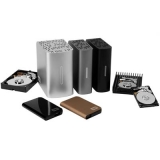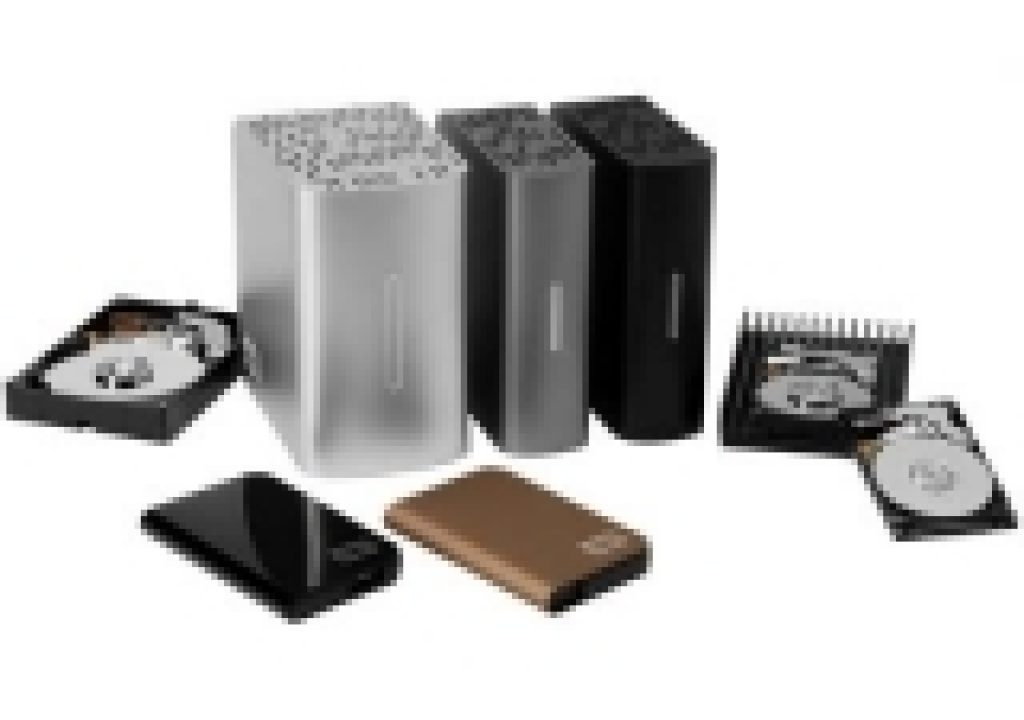
In part 2 of my Christmas gift list for those photographically inclined I covered memory cards, something every photographer needs more of, and today I’ll cover something equally in need by photographers, hard drives. For the photographer in the digital age the computer is almost as important as the camera and lens are.
If there’s one axiom in digital photography its “Photographers never have enough disk space”, especially those photographers who travel to remote locations and must rely on their laptops to store and edit their photos at the end of a day’s shooting.
Drives come in basically two sizes, 2.5″ for laptops and 3.5″ for desktop computers. Drives are either internal or you can attach an external drive via USB, FireWire or eSata connectors.
Just last year the largest laptop hard drives were 250GB and today you can easily find drives with double that capacity selling for about the same price.
Laptop drives are usually of the 2.5″ variety with very few exceptions, those being Solid State Drives (SSD) with some new 1.25″ drives arriving on the scene. Hard drives are easy enough to swap out that in most cases the user can do it themselves. On my Dell laptop I only need to unscrew 5 screws to change the drive, which took me all of 5 minutes to do the first time.
Before you do that though I strongly recommend you make a backup of your entire hard drive in case of an accident. There are several good utilities that can do this for you. If you happen to have aSeagate or Maxtor drive in your computer then you can go to Maxtor’s site and download their free software, MaxBlast . Once installed you can make a clone of your old drive and then transfer that over to the new drive. To make this easier I recommend you use an external hard drive to copy the clone onto, then copy from the external drive to your new drive and you’re done! One tip, when you’re using the MaxBlast software (which is really an older version of Acronis Software’s excellent True Image) choose not to compress the data of your backup. It greatly increases backup time at the expense of requiring more disk space. I don’t think it’s much of a sacrifice since you’re going to delete the copy once you make the transfer to the new drive and check that everything is working properly.
You can easily pick up a top quality 320GB 2.5″ 5400RPM drive in the $70-$90 range. I’d also consider a faster spinning 7200RPM laptop drive since is makes your system ‘snappy’. Look for an efficient drive with low power needs since faster spinning drives consume more power, and when you’re at a remote location far away from the nearest AC socket you want to conserve battery power as much as possible.
Maybe you’re not so technically inclined and don’t want to crack open your computer to do a little operating on its insides – what are your other options? The easiest is to pick up one of the tiny USB powered external 2.5″ drives from Western Digital, Seagate, iOmega, Toshiba or other top brands. These tiny drives are powered right from the laptops’ USB port, no AC cord or power block needed so they are easy to carry with your laptop at all times. There can be a ‘Gotcha’ with some older laptops not outputting enough power through their USB ports. In this case you can pick up a special cord that will use power from two of your laptop’s USB ports. Most people won’t have this problem with fairly new laptops.
You can also try a powered USB hub like the D-Link DUB-H4 or DUB-H7 which will power the above mentioned drives at the expense of a little extra clutter on your desktop. Both also give you extra USB ports to add other devices like a card reader.
Another advantage of these external drives is to make a backup of your photos during transfer from your camera, or memory card, to your computer. Many programs, like Adobe Lightroom, offer to copy your photos to the computer as well as send a second copy to an external drive. Its always best to have a backup of your photos in case something happens to the images on the laptop.
For those photographers using a desktop computer at their home or office there are a number of options. Again you can either add or replace internal drives or consider using external drives.
I keep my eye open for sales at stores like Staples, Best Buy, Circuit City or online at places like Newegg, or Tiger Direct. I recently picked up a Seagate 1.5 TB internal drive for only $129. Last year you were lucky to get a 500GB drive for that price). Before you buy though check that the desktop computer has empty drive bays and enough connectors on the motherboard. Otherwise consider pulling out the older drives and replacing them with higher capacity ones.
I’ve got a whole collection of external drives from Western Digital, Calvary, Seagate, and a few internal drives I had laying around mounted in their own enclosures. Look at the size of the JPEG or RAW images from your camera, multiply that by the number of images shot in a month and you can figure out how long it will take you to fill a 500GB drive. A busy photographer can fill up a drive that size in no time. For example, I use to often shoot 1,000 or more images in a day during a catalog shoot. Multiply a 8MB JPEG by 1,000 and you’ve filled 8GB in a day.
For the photo studio or power-user you can invest in a network storage device like those like the Drobo from Data Robotics, Inc. The Drobo is basically a box with electronics and 4 hard drive bays where you can insert 3.5″ drives of any capacity. Connect it to your Ethernet or wireless network and everyone on the network will have access to the photos. The advantage of theDrobo system is its automatic redundancy. If something should happen to one of the drives and it fails or the data on it is corrupted the Drobo has an automatically generated backup. You can add or pull drives on the fly too. Drobo works with PCs, Macs and Linux machines and you can set it up to access the drive from anywhere in the world where you have an Internet connection. Price ranges in the $400~$500 range w/o drives. Check out their site for more details www.Drobo.com
So much for adding extra storage. Next article I’ll cover what lighting accessories would make for a good gift for that person who loves to take photos.

